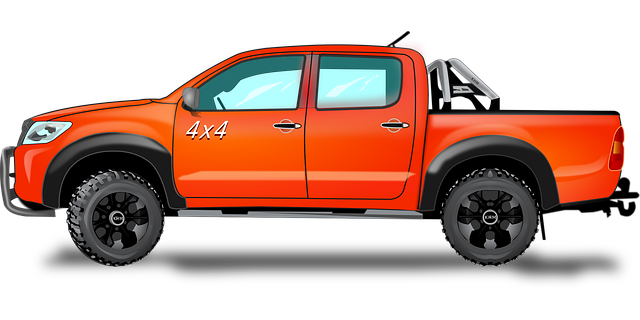The Brownsville fleet truck repair manual emphasizes the critical role of recovery lines (auxiliary air lines) in maintaining safe vehicle operations, particularly post-accident repairs. Proper maintenance ensures these lines divert compressed air to critical systems like brakes and steering, minimizing downtime and enhancing performance. The manual guides mechanics on regular inspections, part replacements, and secure attachments for efficient lifting/lowering operations. Additionally, it offers troubleshooting tips for common issues like engine problems, transmission troubles, tire wear, and suspension failures, with an emphasis on regular servicing and safety training to ensure a well-functioning fleet in Brownsville's dynamic urban setting.
“In the world of trucking, efficient recovery line systems are a game-changer. This article, tailored for professionals in Brownsville, delves into the intricate yet vital components of recovery lines, as outlined in the fleet truck repair manual. We explore their basic understanding, significance in truck repairs, and functionality.
From maintenance tips to common issues and safety measures, this comprehensive guide ensures folks navigating the bustling landscape of fleet vehicle care have a reliable resource.”
- Understanding Recovery Lines: A Basic Overview
- The Significance of Recovery Lines in Truck Repair
- Components and Functionality of Recovery Systems
- Steps for Effective Maintenance as Per Fleet Truck Repair Manual
- Common Issues and Troubleshooting Tips
- Safety Measures and Best Practices for Recovery Line Operations
Understanding Recovery Lines: A Basic Overview

In the realm of fleet truck maintenance, understanding recovery lines is a fundamental aspect often highlighted in the Brownsville fleet truck repair manual. These recovery lines, also known as auxiliary lines, serve as vital components in emergency situations. They facilitate the efficient transfer of compressed air from the primary system to various components requiring support, such as brakes or steering mechanisms. This ensures that critical systems can function optimally even if there’s a breach or temporary malfunction in the main air line.
The Brownsville fleet truck repair manual emphasizes the strategic placement and proper maintenance of recovery lines to enhance vehicle safety and operational reliability. Regular inspections, timely replacements, and adherence to recommended maintenance practices are crucial to ensure these auxiliary lines remain functional when needed most. By integrating recovery lines into their maintenance routines, fleet managers in Brownsville can minimize downtime, boost vehicle performance, and ultimately contribute to a safer driving experience for their drivers.
The Significance of Recovery Lines in Truck Repair

In the realm of fleet truck repair, especially in dynamic cities like Brownsville, recovery lines play a pivotal role. These components are essential elements in any vehicle’s suspension system, facilitating smooth and stable travel by ensuring proper alignment and tire contact with the road. When recovering from collisions or accidents, the integrity of these lines is paramount as they prevent further damage and support the weight of the truck during the repair process.
A well-maintained fleet truck repair manual for Brownsville mechanics highlights the significance of regularly inspecting recovery lines. Given the constant wear and tear faced by trucks plying city streets, these lines are prone to fatigue and failure. Regular checks can identify potential issues early on, preventing catastrophic breakdowns that could disrupt operations or worse, lead to accidents. Understanding the importance of recovery lines is thus not just a matter of efficient fleet management but also one of safety and cost-effectiveness.
Components and Functionality of Recovery Systems

In the context of fleet truck operations in Brownsville, recovery systems play a pivotal role in ensuring efficient and safe vehicle restoration post-accident or mechanical failure. These systems are comprised of several key components that work harmoniously to right a vehicle and get it back on the road. A fleet truck repair manual for Brownsville mechanics outlines critical elements such as winches, tow trucks, jack systems, and recovery equipment like chains and straps. Each component is designed to handle different scenarios, from light towing to heavy-duty recoveries in challenging terrains.
The functionality of these recovery systems involves a coordinated effort to stabilize, lift, and transport disabled vehicles. Winches and tow trucks provide the initial pulling power, while jack systems raise the vehicle for safe removal of wheels or inspection. Complementary equipment like chains and straps ensures secure attachment during towing, preventing further damage or disassembly. A well-maintained fleet truck repair manual in Brownsville guides technicians through proper usage and inspection routines to keep these recovery systems operational at all times, ensuring swift response and effective recoveries for the city’s trucking fleet.
Steps for Effective Maintenance as Per Fleet Truck Repair Manual

Maintaining recovery lines is a critical aspect of fleet truck upkeep, as outlined in the comprehensive Fleet Truck Repair Manual for Brownsville-based garages and mechanics. The process involves several meticulous steps to ensure optimal performance when vehicles need to be recovered from challenging situations. First, regular inspection is key; mechanics should thoroughly examine the recovery line components, checking for any signs of wear, damage, or corrosion. This includes the cable, winches, pulleys, and all connecting hardware.
Per the manual’s guidance, replacing worn parts promptly is essential to prevent catastrophic failures during recovery operations. Moreover, proper lubrication of moving parts and regular cleaning to remove dirt and debris are recommended. Mechanics in Brownsville should also ensure the line’s secure attachment to the truck and any other fixed points, as specified in the repair manual, to guarantee stability and efficiency when lifting or lowering the vehicle.
Common Issues and Troubleshooting Tips

In the world of fleet management, truck repairs are an inevitable aspect, and being equipped with a comprehensive fleet truck repair manual is essential for any operator in Brownsville. Common issues can range from engine problems to electrical glitches or mechanical failures. For instance, a common challenge is premature tire wear, which often stems from misalignment or improper inflation pressure. Troubleshooting tips suggest regular checks of tire pressure and suspension systems, as well as aligning wheels according to the manufacturer’s recommendations.
Another frequent issue is drivetrain troubles, such as excessive noise or difficulty shifting gears. This can be attributed to low transmission fluid levels, worn-out gear components, or even a damaged differential. Effective troubleshooting involves consulting the fleet truck repair manual for specific procedures on fluid maintenance and part replacement. Regular servicing, including oil changes and filter replacements, is key to preventing these issues, ensuring your trucks operate smoothly and efficiently in Brownsville’s bustling fleet scene.
Safety Measures and Best Practices for Recovery Line Operations

When operating recovery lines, safety should be the top priority for all personnel and businesses involved in the process. In areas like Brownsville, where fleet truck repair services are essential, adhering to best practices ensures minimal risks and efficient operations. One crucial measure is proper training; every team member must be adept at using recovery equipment and understanding vehicle dynamics during towing. This includes knowledge of vehicle weight limits, coupling mechanisms, and safety protocols for different weather conditions.
Additionally, maintaining a well-organized fleet truck repair manual is vital. The manual should detail standard operating procedures, emergency response plans, and regular maintenance checks. It should also include specific guidelines for recovery line deployment, considering local regulations and terrain challenges. Regular updates and accessibility ensure that all team members have the latest information, enhancing safety and operational effectiveness across the board.
Recovery lines, a vital component in truck maintenance, as highlighted by the fleet Truck repair manual Brownsville, play a significant role in ensuring safe and efficient operations. Understanding their functionality, regular maintenance, and troubleshooting common issues are essential practices for any trucking fleet. By following best safety measures and adhering to expert advice, fleet managers can extend the lifespan of recovery systems, reduce downtime, and promote smooth transportation logistics.



